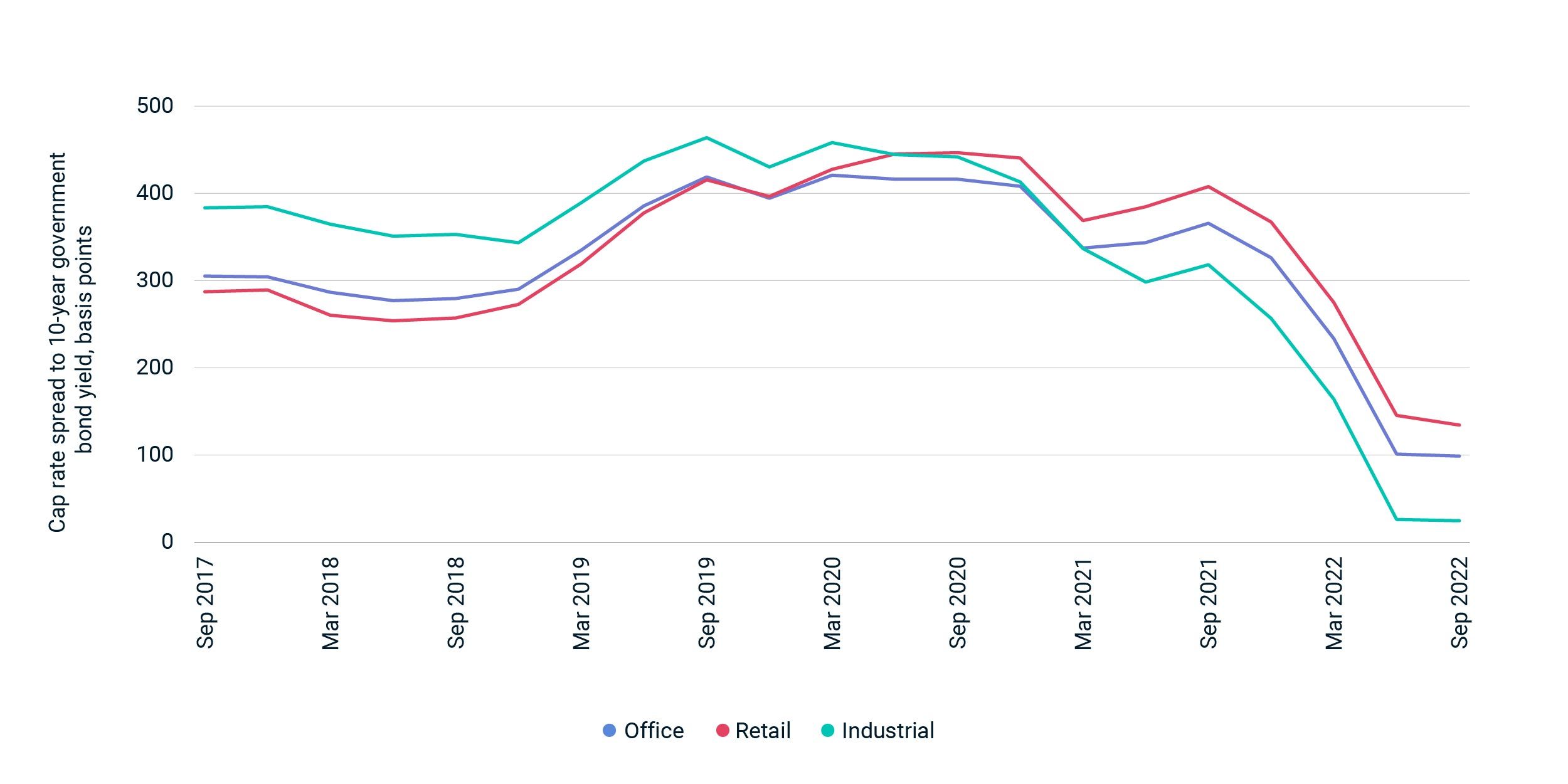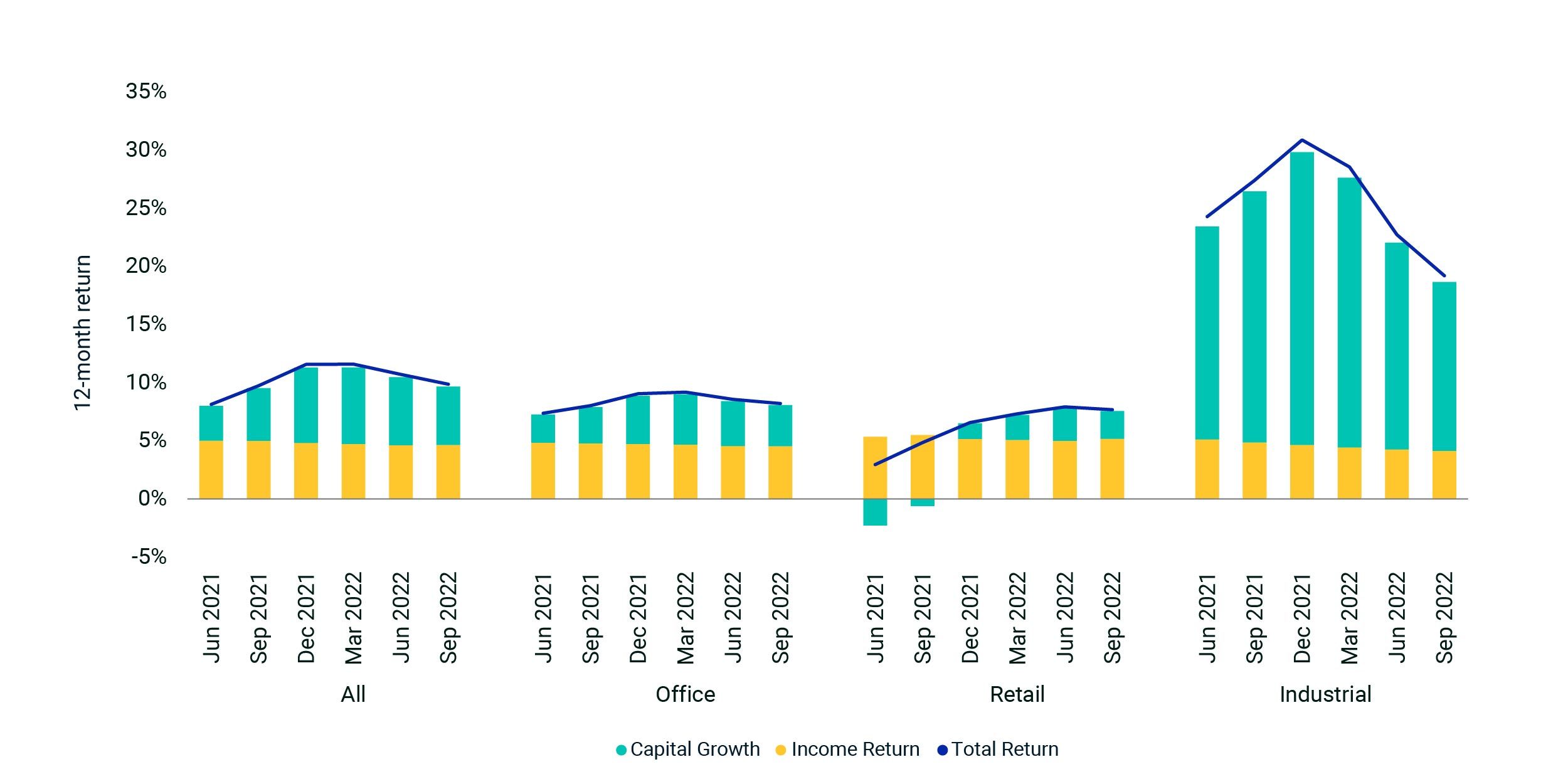Returns for Australian Commercial Property Ebbed
Australian commercial real estate returns decelerated further in the third quarter. For the 12 months to September, the Property Council of Australia/MSCI Australia Annual Property Index posted a total return of 9.9%, down from 10.7% in June.
Despite market challenges including a jump in interest rates, pricing did not weaken. Indeed, cap rates compressed further, to 4.7% at an all-property level. There is typically a lag between changing macroeconomic trends and commercial property valuations, so significant repricing had not been expected.
Industrial sector still led
The industrial sector continued to be the outstanding performer among the core sectors, despite a sharp deceleration; the 12-month total return of 19.2% was primarily driven by capital growth. Industrial-sector yields compressed further, to below 4% for the first time in the index's history. Additionally, the spread between industrial cap rates and 10-year government bond rates narrowed to its lowest recorded level at just 25 basis points (bps) compared to the five-year average of 340 bps. Historically, yields have expanded following such compression between the rates.
The retail sector slipped to a 12-month total return of 7.7% in September from 7.9% in June; capital growth eased but remained positive at 2.4%. The office sector recorded a total return of 8.2%, down from 8.6% in June. Secondary offices continue their slide, with capital growth of 0.9%, down from the 5.0% figure at the start of 2022.
Cap rate spreads to government bonds narrowed

Source: MSCI, Reserve Bank of Australia
Industrial-sector returns decelerated most

Core sectors and all property; The Property Council of Australia/MSCI Australia Annual Property Index
Subscribe todayto have insights delivered to your inbox.
Examining UK Real Estate’s Worst Quarter Since 2009
Following its recent sharp increase, the 10-year U.K. government bond-yield has risen above the net-operating-income (NOI) yield of U.K. real estate for the first time since 2007.
A Correction in US Commercial Real Estate
The U.S. market for offices has slowed, with sellers hesitant to take a loss and buyers sitting on the sidelines.
Getting the Full Picture on Tenant-Default Risk in Real Estate
Tenant-default risk analysis in real estate portfolios is often focused on the largest tenants by rental income due to resource or data constraints, but the underlying data suggests this practice may be inadequate.
The content of this page is for informational purposes only and is intended for institutional professionals with the analytical resources and tools necessary to interpret any performance information. Nothing herein is intended to recommend any product, tool or service. For all references to laws, rules or regulations, please note that the information is provided “as is” and does not constitute legal advice or any binding interpretation. Any approach to comply with regulatory or policy initiatives should be discussed with your own legal counsel and/or the relevant competent authority, as needed.
